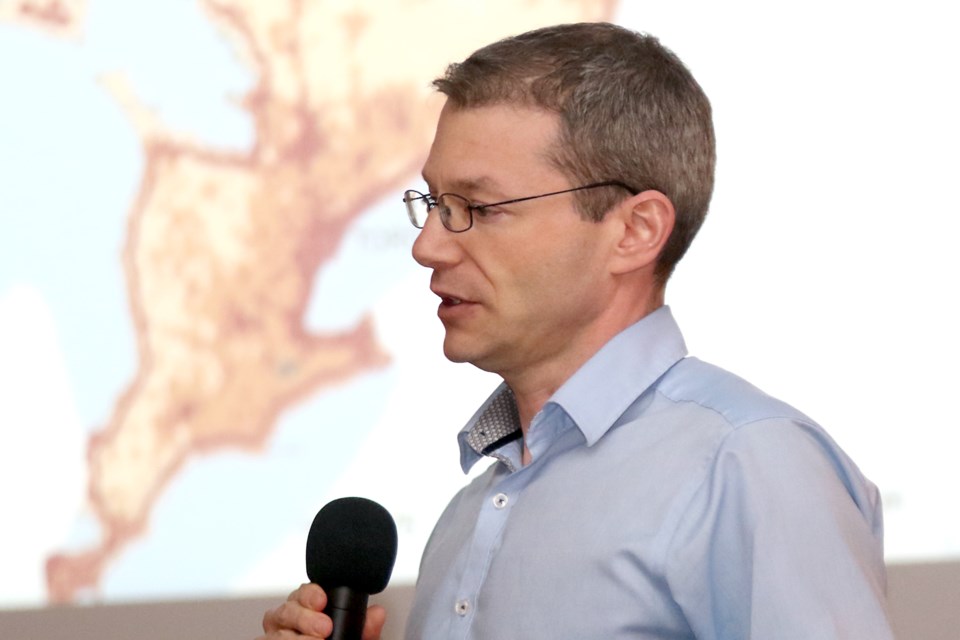GRAND PORTAGE, Minn. – The time to make friends is before you need them.
That’s precisely what government officials and emergency crews on both sides of the border have spent the past couple of days working on, taking part in the 2018 Cross-Border Minnesota-Ontario Emergency Management Conference, a biennial event designed to find ways to better share resources when disaster strikes.
Mike Morton, director of emergency management with Ontario’s Office of the Fire Marshal and Emergency Management, said the goal is to create a much more seamless cross-border emergency response system, so that when trouble, such as an out-of-control wildfire, a tornado or a flood does break out, all sides are on the same page.
“Our goal is to share information, work on process and protocols, so that we can get emergency response resources to citizens on both sides of the border as quickly as possible, regardless of where those resources might be located,” Morton said on Thursday during a break from the conference, taking place at the Grand Portage Lodge and Casino Event Centre.
It’s especially important in this region, where populations are often sparse and resources are few and far between when it comes to disaster and emergency responses.
“As we know, Northern Ontario and Northern Minnesota share something in common, and that’s a sparsity of resources across a very large geographic area,” Morton said.
Whether it’s a fire truck or a back hoe, electrical workers or medical personnel, the ideal is remove obstacles getting in the way of getting people and equipment from one country to the other.
Topics discussed over the two days include the roles of the Northern Emergency Management Assistance Compact and the OFMEM, the rollout of the North American Humanitarian Response Summit, law enforcement intelligence and trends of concern in public safety, the role of border patrol versus customs and immigration and a session about this year’s public health and infectious disease concerns.
Joe Kelly, the director of Homeland Security and Emergency Management with the Minnesota Department of Public Safety, said bringing a province like Ontario on board is significant, adding that collaboration is often the best way to resolve emergencies quickly and without incident.
“Disasters, emergencies, catastrophes, big events and incidents, they don’t really pay attention to the geographic and jurisdictional boundaries that we’ve got. Floods don’t know where the province starts and the state ends and no one has the resources that they need to deal with significant events,” said Kelly, adding states have had similar agreements in place for decades.
The next step would be drawing up an agreement stating the obligations expected by each side and laying out compensation when resources from one jurisdiction are used in another. Finding ways to speed up border crossings when emergencies hit is also something to be worked out in any deal that gets signed.
